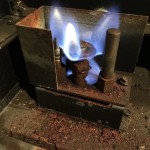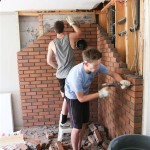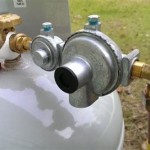Natural Gas Fireplace Burner Replacement: A Comprehensive Guide
The natural gas fireplace offers ambiance and warmth, particularly valued during colder months. A crucial component contributing to the operational effectiveness of the fireplace is the burner. Over time, the burner can experience wear and tear, leading to diminished performance or potential hazards. This article provides a comprehensive overview of natural gas fireplace burner replacement, covering aspects from identification of issues to the actual replacement process.
Understanding the functionality of the burner is paramount. The burner is responsible for mixing natural gas with air in the correct ratio to produce a controlled and efficient flame. This combustion process generates heat, which is then radiated into the room. A properly functioning burner ensures consistent flame height, complete combustion of the gas, and minimizes the production of harmful byproducts such as carbon monoxide.
Various factors can contribute to the deterioration of a natural gas fireplace burner. Prolonged exposure to high temperatures, inconsistent gas pressure, dust, debris, and corrosion are common culprits. Routine operation and maintenance are crucial for extending the burner's lifespan; however, eventually, replacement becomes necessary.
Identifying the Need for Burner Replacement
Several telltale signs indicate that a natural gas fireplace burner requires replacement. Recognizing these symptoms early can prevent potential safety hazards and ensure the continued efficient operation of the fireplace. Common indicators include:
Irregular Flame Pattern: A healthy natural gas flame should be consistent in height and color, typically blue with tinges of yellow. An irregular flame pattern, characterized by sporadic flickering, uneven flame height, or excessive yellow or orange flames, suggests a problem with the burner. This irregularity could be due to clogged burner ports, corrosion, or a gas-air mixture imbalance.
Soot Buildup: Excessive soot accumulation on the fireplace glass, logs, or surrounding surfaces is a significant indicator of incomplete combustion, often caused by a malfunctioning burner. Soot buildup not only mars the appearance of the fireplace but also poses a potential health hazard due to the presence of particulate matter.
Unusual Odors: While a slight odor may be noticeable during the initial startup of a fireplace, persistent or strong gas odors, or the smell of burning plastic, indicate a potentially serious problem. Gas leaks are inherently dangerous, and the smell of burning plastic could point to a burner component overheating due to malfunction. In such cases, immediate professional intervention is required.
Difficulty Starting or Staying Lit: If the fireplace struggles to ignite or frequently extinguishes itself shortly after being lit, the burner could be the culprit. This could be due to a faulty pilot light assembly, a damaged thermocouple, or, more directly, a partially blocked or corroded burner preventing proper gas flow.
Visible Damage: A visual inspection of the burner may reveal physical damage such as cracks, corrosion, or warped components. Any visible damage is a definitive sign that the burner needs to be replaced. Ignoring such damage can lead to further deterioration and compromise the fireplace's safety and functionality.
Selecting the Correct Replacement Burner
Choosing the appropriate replacement burner is essential for ensuring the safe and effective operation of the natural gas fireplace. Several factors must be considered during the selection process:
Compatibility: The replacement burner must be compatible with the specific make and model of the fireplace. Refer to the fireplace's owner's manual for specifications, including BTU rating, gas type (natural gas or propane), and burner dimensions. Using an incompatible burner can lead to inefficient combustion, safety hazards, or even damage to the fireplace itself.
BTU Rating: The BTU (British Thermal Unit) rating of the burner indicates its heat output capacity. The replacement burner should have the same or very similar BTU rating as the original burner. A burner with a significantly higher BTU rating could overload the fireplace, leading to overheating, while a burner with a lower BTU rating may not provide sufficient heat.
Burner Type: Natural gas fireplaces utilize different types of burners, including single-pipe burners, dual-pipe burners, and ribbon burners. It's crucial to identify the type of burner used in the existing fireplace and select a replacement of the same type. Using a different type of burner may require modifications to the gas line and may not function properly within the existing fireplace design.
Gas Type: Natural gas and propane fireplaces use different burners specifically designed for the respective fuel. A natural gas burner should never be used with propane, and vice versa. Mismatching the burner and gas type can lead to dangerous combustion conditions and equipment damage.
Certifications: Look for replacement burners that are certified by recognized testing organizations such as CSA (Canadian Standards Association) or UL (Underwriters Laboratories). Certification ensures that the burner has been tested and meets established safety standards.
Material: Burners are typically constructed from stainless steel or coated steel. Stainless steel burners offer superior corrosion resistance and longer lifespan compared to coated steel burners. Consider the material when selecting a replacement burner, especially in environments with high humidity.
Step-by-Step Burner Replacement Procedure
Replacing a natural gas fireplace burner is a task that requires meticulous attention to safety and detail. While some homeowners may be comfortable performing the replacement themselves, it is strongly recommended to consult a qualified gas technician, especially if unfamiliar with gas appliance repair. The following steps outline the general process for burner replacement:
Safety Precautions:
Turn off the Gas Supply: Locate the gas shut-off valve for the fireplace, typically located on the gas line near the fireplace or at the main gas meter. Turn the valve to the "off" position. Double-check that the gas supply is completely shut off before proceeding.
Allow the Fireplace to Cool: Ensure that the fireplace is completely cool before starting the replacement process. Working on a hot fireplace can cause burns.
Gather Necessary Tools and Materials: Assemble the required tools, including screwdrivers (Phillips and flathead), adjustable wrench, pipe wrench, gas leak detector solution, and a new burner.
Preparation:
Remove the Fireplace Logs and Glass Door: Carefully remove the artificial logs and the glass door or screen from the fireplace. Store them in a safe location to prevent damage.
Accessing the Burner:
Locate the Burner Assembly: The burner assembly is typically located at the bottom of the fireplace, beneath the log grate.
Disconnect the Gas Line: Using a pipe wrench and adjustable wrench, carefully disconnect the gas line from the burner assembly. Ensure that the gas line connection is properly supported to prevent damage to the gas line itself.
Disconnect the Igniter and Thermocouple: If the burner assembly includes an igniter and thermocouple, disconnect them from the burner.
Removing the Old Burner:
Remove the Mounting Screws: Remove the screws or fasteners that secure the burner assembly to the fireplace. Note the location of each screw to ensure proper reassembly.
Lift out the Old Burner: Carefully lift the old burner assembly out of the fireplace.
Installing the New Burner:
Position the New Burner: Carefully position the new burner assembly into the fireplace, aligning it with the mounting points.
Secure the Burner: Secure the burner assembly to the fireplace using the screws or fasteners that were removed earlier. Ensure that the burner is securely mounted.
Reconnect Components:
Reconnect the Gas Line: Reconnect the gas line to the burner assembly. Use pipe thread sealant (approved for gas lines) on the threads to ensure a gas-tight seal. Tighten the connection securely with a pipe wrench and adjustable wrench.
Reconnect the Igniter and Thermocouple: Reconnect the igniter and thermocouple to the burner assembly.
Testing for Leaks:
Turn on the Gas Supply: Slowly turn the gas shut-off valve to the "on" position.
Apply Gas Leak Detector Solution: Apply gas leak detector solution to all gas line connections. Look for bubbles, which indicate a gas leak. If a leak is detected, immediately turn off the gas supply and tighten the connection or consult a qualified gas technician.
Final Steps:
Reinstall the Logs and Glass Door: Carefully reinstall the artificial logs and the glass door or screen onto the fireplace.
Test the Fireplace: Light the fireplace and observe the flame pattern. Ensure that the flame is consistent and that there are no unusual odors. If any issues are observed, immediately turn off the gas supply and consult a qualified gas technician.
Following these steps diligently will allow for a safe and effective burner replacement. However, it is imperative to prioritize safety and seek professional assistance when uncertain.
Proper disposal of the old burner is essential. Contact local waste management services for guidance on the appropriate disposal methods, as some components may require special handling.

Gas Fireplace Natural Bdm35 The Cozy Cabin Lennox Hearth Parts

All About Gas Burners For Fireplaces Types Features

G400 Series G450 G490 Natural Vent Gas Fireplace 114 117 The Cozy Cabin Stove Parts

Parts Of A Gas Fireplace Explained With Real Examples

A Plus Inc Superior B500 Replacement Parts Accessories

Comfort Glow Vent Free Fireplace Brookhill Compact Fireplaces

Napoleon Parts

Duluth Forge 28 In 55 000 Btu Direct Vented Natural Gas Fire Log Glass Burner Kit 210023 The Home Depot

Gas Fireplace Vermontcastings Parts For Vermont Castings Majestic

Custom Gas Pipes And Fireplace Burners Diamond Fire Glass
Related Posts








